|
Machimus arthriticus from Hungary >Neoepitriptus setosulus
|
|
| piros |
Posted on 21-08-2018 16:19
|
|
Member Location: Posts: 1762 Joined: 04.01.12 |
I found this fly on 19-08-2018, between Pirtó and Tázlár, central Hungary (Danube - Tisza interfluve) I have little doubt about its identity, but, according to Fauna Europaea, M. arthriticus is not known from Hungary, so I would appreciate if someone could confirm this ID. Thanks in advance! Greetings, Henrik Edited by piros on 24-10-2018 00:01 |
|
|
|
| piros |
Posted on 21-08-2018 16:19
|
|
Member Location: Posts: 1762 Joined: 04.01.12 |
. |
|
|
|
| Quaedfliegh |
Posted on 23-08-2018 22:01
|
|
Member Location: Posts: 2198 Joined: 18.05.10 |
It seems to be... but some things seem to be strange, I miss the long yellowish alar bristles and this creature seems to be "smaller" more slender (simple individual variety?) Compare: https://waarneming.nl/waarneming/view/55392600?_popup=1
Greetings, Reinoud Field guide to the robber flies of the Netherlands and Belgium: https://www.jeugdbondsuitgeverij.nl/product/field-guide-to-the-robberflies-of-the-netherlands-and-belgium/ https://www.nev.nl/diptera/ |
|
|
|
| piros |
Posted on 24-08-2018 15:05
|
|
Member Location: Posts: 1762 Joined: 04.01.12 |
Thank you Reinoud! Indeed, this is a small specimen, I estimated its size arround 15-16mm, but it is still within the range given for this sp., I think. I can't say much about the alar bristles, so I attach enlargements of the thorax in the hope that they can help. (In any case, I can't really see any possile ID other than M. arthriticus.) Best regards, Henrik Edited by piros on 24-08-2018 15:10 |
|
|
|
| piros |
Posted on 24-08-2018 15:05
|
|
Member Location: Posts: 1762 Joined: 04.01.12 |
. |
|
|
|
| Quaedfliegh |
Posted on 24-08-2018 23:05
|
|
Member Location: Posts: 2198 Joined: 18.05.10 |
Well, I found an alternative, a species I have never seen but seems to be present in Slovakia.... Neoepitriptus ninae Lehr, 1992. Copy from brief translation (key) 33. normalerweise sind die Beine ganz schwarz, seltener sind die Hüften und tibiae posterior grau-braun; Dististylus Abb. 3.6; Länge 11,5 - 19,1 mm, ∅ 14,2 mm........................................................................................................................................ N. ninae sp. n. I think that "hüften" should be "schenkel" > femora There is another detail why I am doubting, M arthriticus has besides bristles on the sternites also rather long hairs on the first few sternites, they seem to be lacking in your specimen. Edited by Quaedfliegh on 24-08-2018 23:11 Greetings, Reinoud Field guide to the robber flies of the Netherlands and Belgium: https://www.jeugdbondsuitgeverij.nl/product/field-guide-to-the-robberflies-of-the-netherlands-and-belgium/ https://www.nev.nl/diptera/ |
|
|
|
| piros |
Posted on 25-08-2018 10:42
|
|
Member Location: Posts: 1762 Joined: 04.01.12 |
You are absolutely righ, this is Neoepitritus, but N. setulosus, not N. ninae!I should have recognised it immediately, because I alredy photographesd and collected it some time ago! Thank you for your hepl (and patience  )! )! |
|
|
|
| Quaedfliegh |
Posted on 25-08-2018 18:04
|
|
Member Location: Posts: 2198 Joined: 18.05.10 |
I should know, you sent me several :-) (thank you very much)
Greetings, Reinoud Field guide to the robber flies of the Netherlands and Belgium: https://www.jeugdbondsuitgeverij.nl/product/field-guide-to-the-robberflies-of-the-netherlands-and-belgium/ https://www.nev.nl/diptera/ |
|
|
|
| Jump to Forum: |


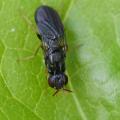



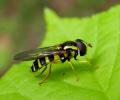
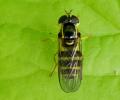

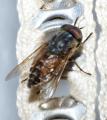
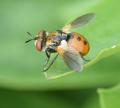



 but don't see the image in the post.
but don't see the image in the post.